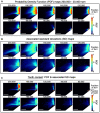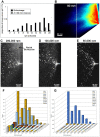Mechanisms of Atomization from Rotary Dental Instruments and Its Mitigation
- PMID: 33327823
- PMCID: PMC7746949
- DOI: 10.1177/0022034520979644
Mechanisms of Atomization from Rotary Dental Instruments and Its Mitigation
Abstract
Since the onset of coronavirus disease 2019, the potential risk of dental procedural generated spray emissions (including aerosols and splatters), for severe acute respiratory syndrome coronavirus 2 transmission, has challenged care providers and policy makers alike. New studies have described the production and dissemination of sprays during simulated dental procedures, but findings lack generalizability beyond their measurements setting. This study aims to describe the fundamental mechanisms associated with spray production from rotary dental instrumentation with particular focus on what are currently considered high-risk components-namely, the production of small droplets that may remain suspended in the room environment for extended periods and the dispersal of high-velocity droplets resulting in formites at distant surfaces. Procedural sprays were parametrically studied with variables including rotation speed, burr-to-tooth contact, and coolant premisting modified and visualized using high-speed imaging and broadband or monochromatic laser light-sheet illumination. Droplet velocities were estimated and probability density maps for all laser illuminated sprays generated. The impact of varying the coolant parameters on heating during instrumentation was considered. Complex structured sprays were produced by water-cooled rotary instruments, which, in the worst case of an air turbine, included droplet projection speeds in excess of 12 m/s and the formation of millions of small droplets that may remain suspended. Elimination of premisting (mixing of coolant water and air prior to burr contact) resulted in a significant reduction in small droplets, but radial atomization may still occur and is modified by burr-to-tooth contact. Spatial probability distribution mapping identified a threshold for rotation speeds for radial atomization between 80,000 and 100,000 rpm. In this operatory mode, cutting efficiency is reduced but sufficient coolant effectiveness appears to be maintained. Multiple mechanisms for atomization of fluids from rotatory instrumentation exist, but parameters can be controlled to modify key spray characteristics during the current crisis.
Keywords: SARS-CoV-2; aerosol; aerosol-generating procedure; dental drill; imaging; infection control.
Conflict of interest statement
Figures





References
-
- Abramovitz I, Palmon A, Levy D, Karabucak B, Kot-Limon N, Shay B, Kolokythas A, Almoznino G. 2020. Dental care during the coronavirus disease 2019 (COVID-19) outbreak: operatory considerations and clinical aspects. Quintessence Int. 51(5):418–429. - PubMed
-
- Adhikari A, Kurella S, Banerjee P, Mitra A. 2017. Aerosolized bacteria and microbial activity in dental clinics during cleaning procedures. J Aerosol Sci. 114:209–218.
-
- Allison JR, Currie CC, Edwards DC, Bowes C, Coulter J, Pickering K, Kozhevnikova E, Durham J, Nile CJ, Jakubovics N, et al. 2021. Evaluating aerosol and splatter following dental procedures: addressing new challenges for oral healthcare and rehabilitation. J Oral Rehabil. 48(1):61–72. - PMC - PubMed
-
- Bourouiba L. 2020. Turbulent gas clouds and respiratory pathogen emissions: potential implications for reducing transmission of COVID-19. JAMA. 323(18):1837–1838. - PubMed
Publication types
MeSH terms
Substances
LinkOut - more resources
Full Text Sources
Medical
Miscellaneous

